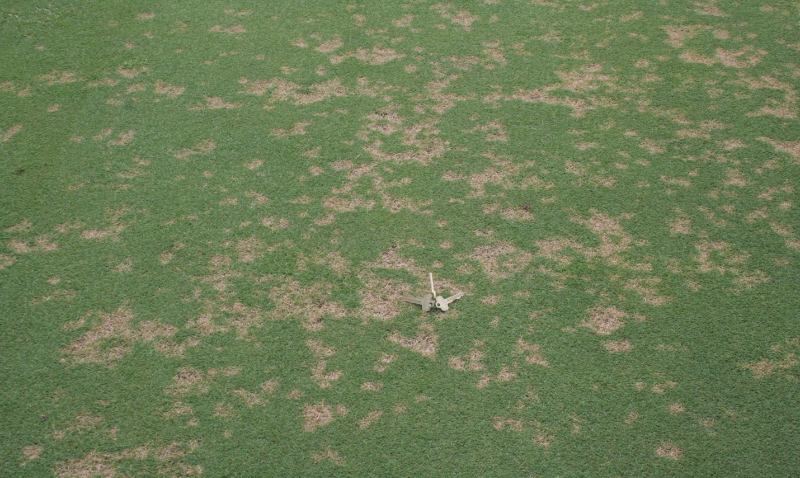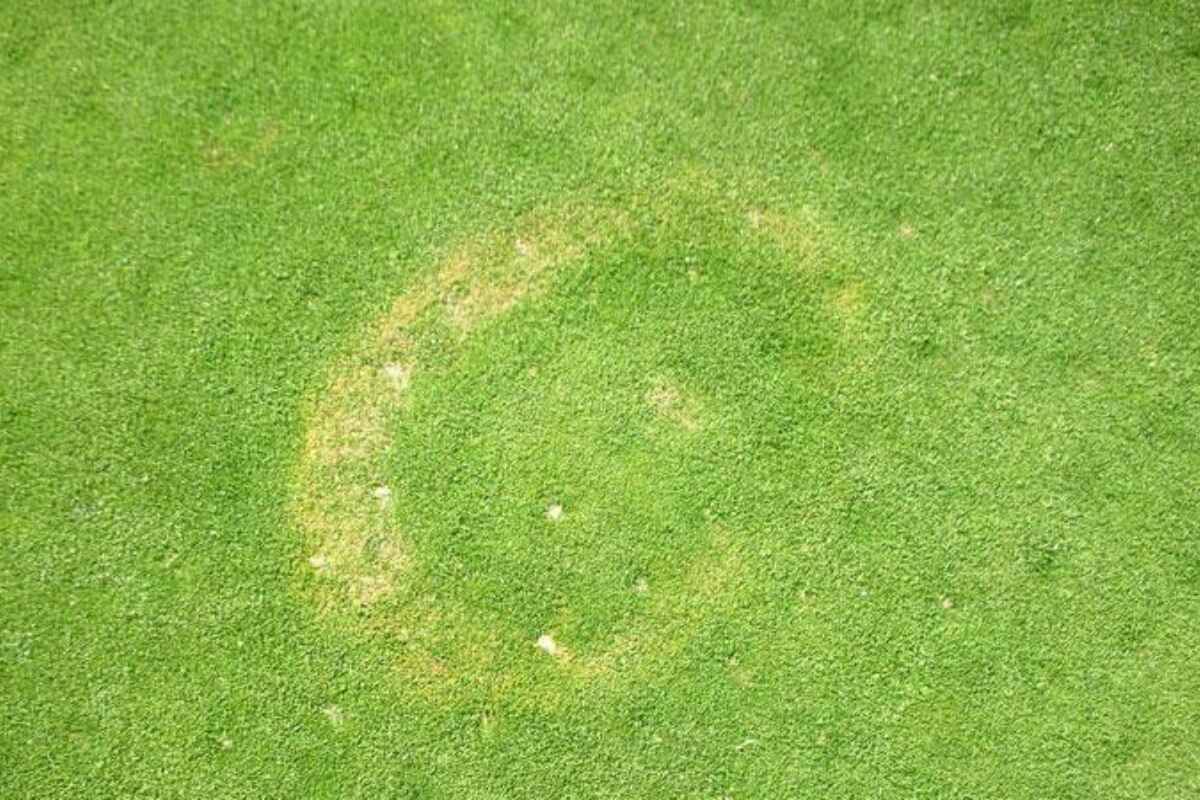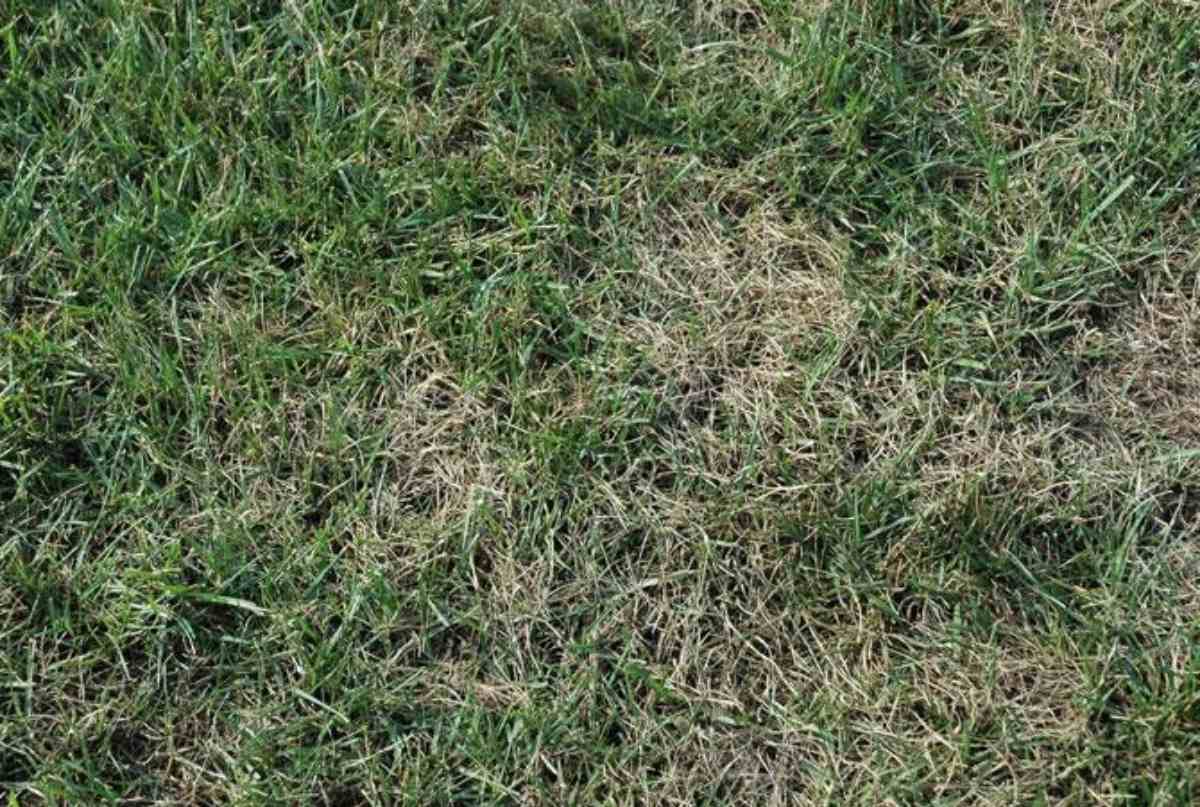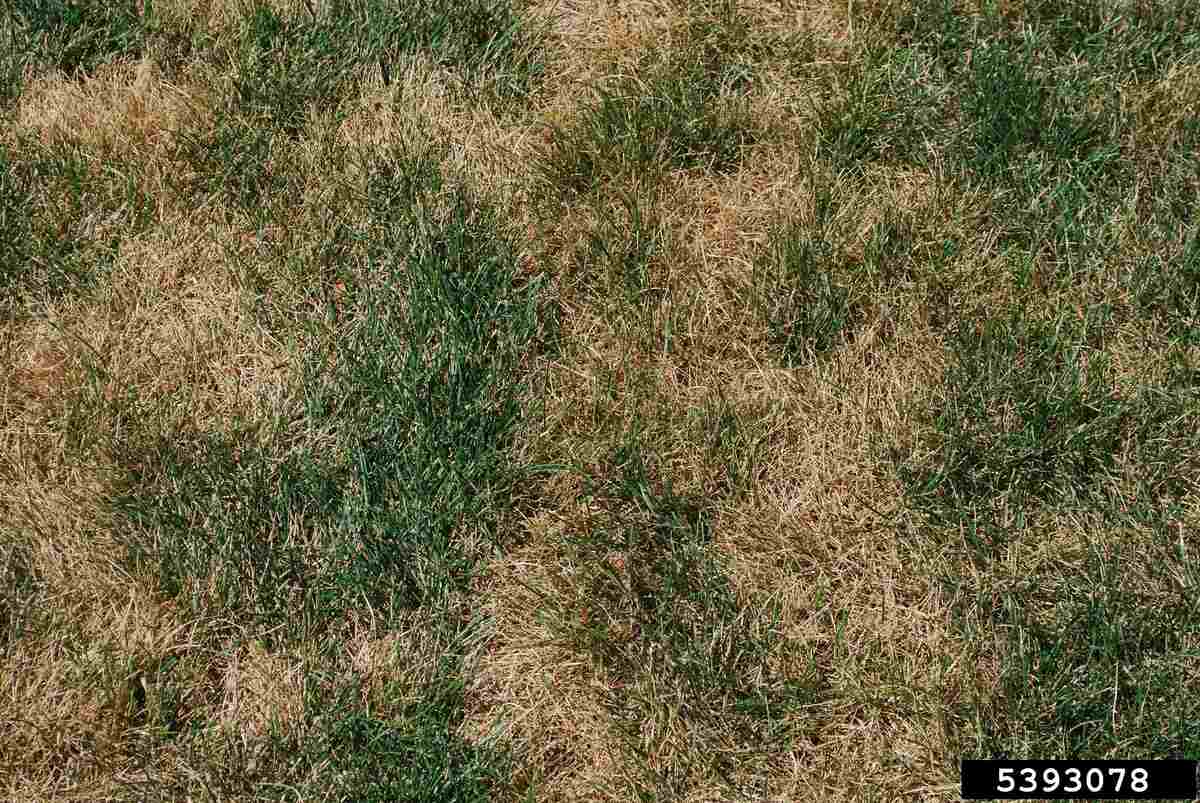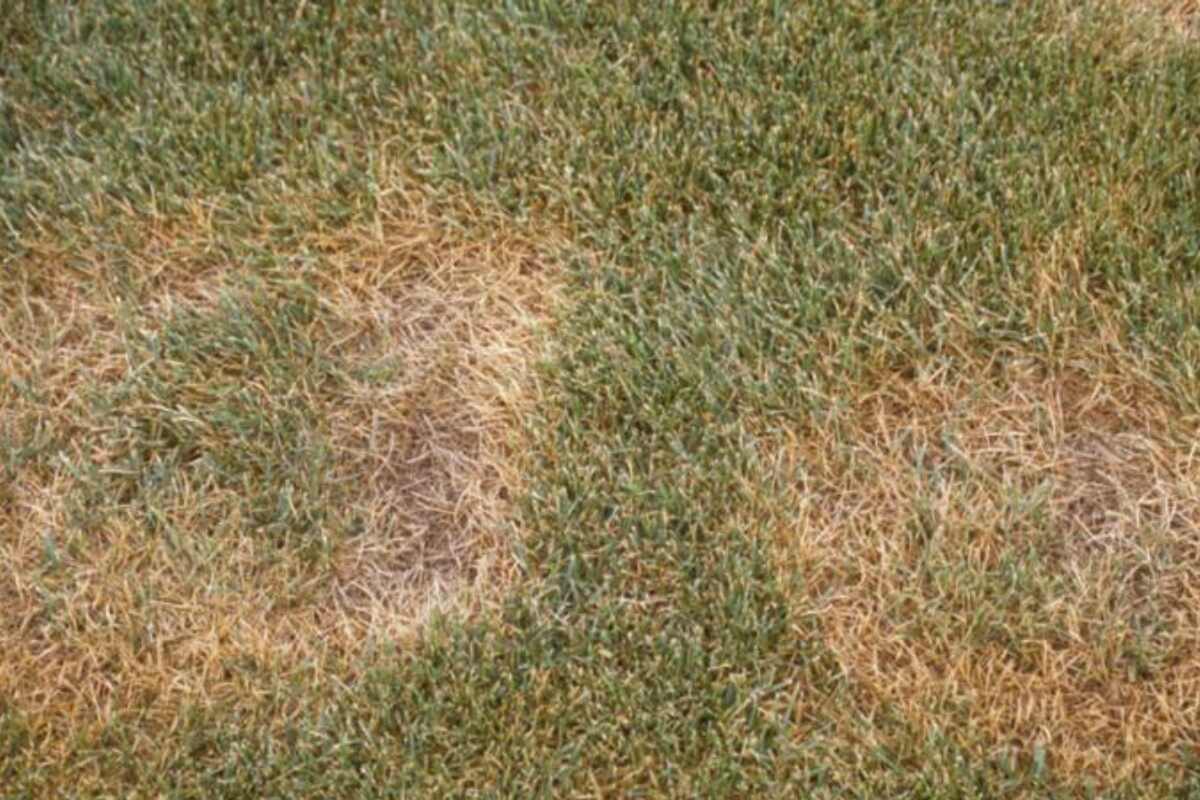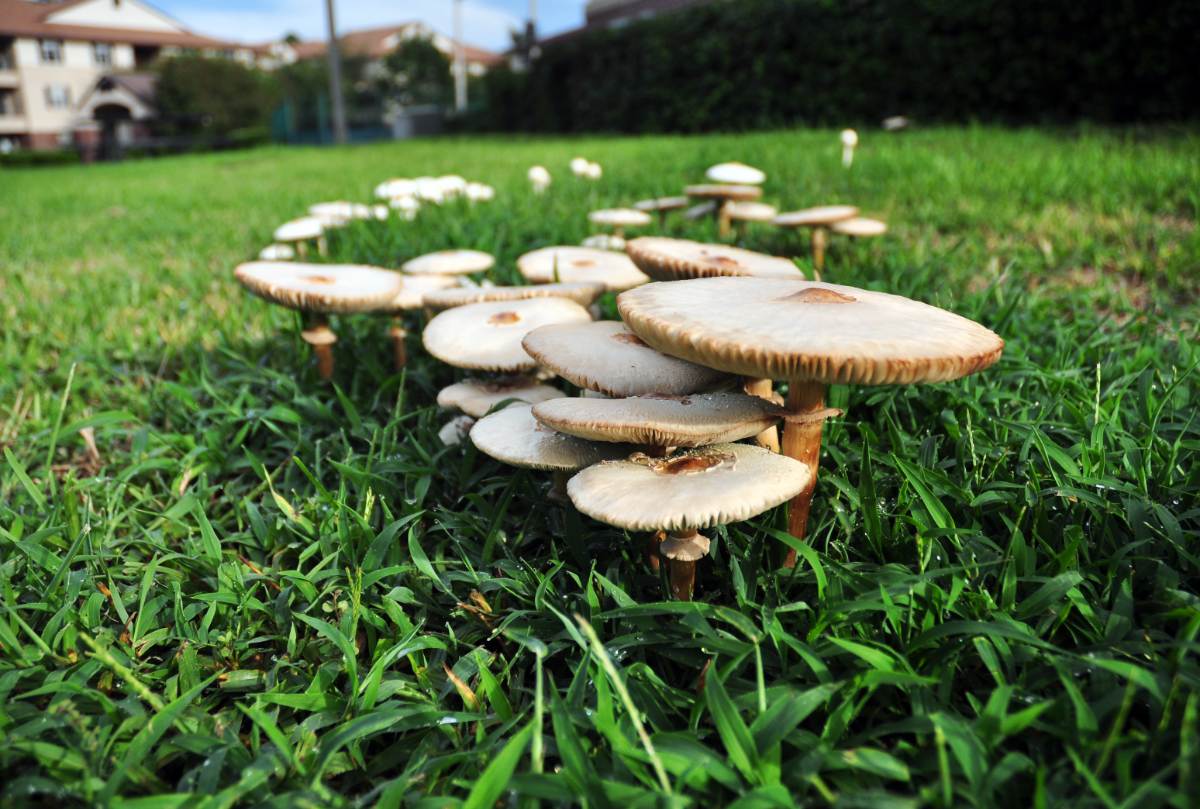
Lawns are susceptible to diseases that can quickly turn a once-healthy green expanse into a patchy, unsightly mess. Once you figure out which disease is causing your lawn’s problems, you’ll be able to treat it and prevent it from coming back.
In this article, we’ll cover the most common lawn diseases in the United States and how to identify them.
First, Identify Your Lawn Disease
Use the slideshow below to identify the lawn disease you are dealing with. Then, use the table of contents to navigate to your lawn disease and read how to get rid of it.
- 1. Dollar Spot
- 2. Red Thread
- 3. Brown Patch
- 4. Large Patch (aka Zoysia Patch)
- 5. Yellow Patch (aka Cold-Season Brown Patch)
- 6. Pythium Blight (Grease Spot)
- 7. Fairy Ring
- 8. Gray Leaf Spot
- 9. Fusarium Blight
- 10. Powdery Mildew
- 11. Spring Dead Spot
- 12. Summer Patch (aka Poa Patch)
- 13. Leaf Rust
- 14. Leaf Spot
- 15. Melting Out
- 16. Take-All Root Rot (TARR)
- 17. Leaf Blight
- 18. Gray Snow Mold
- 19. Pink Snow Mold
- 20. Anthracnose and Root Rot
1. Dollar Spot

Dollar spot disease mainly attacks the grass blades and rarely kills the turf. In severe cases, though, it can start damaging the roots, leading to grass death.
How to identify dollar spot in your lawn:
- Small gold dollar-size (hence the name) yellow or straw-colored to light brown circular spots extending up to 5 inches in diameter.
- Multiple spots might merge and form larger, irregularly shaped patches.
Other symptoms of dollar spot disease: White cobweb-like threads are visible early in the morning on soil and turf.
Peak seasons: Spring through fall
See Related:
– What is Dollar Spot?
– How to Get Rid of Dollar Spot
2. Red Thread
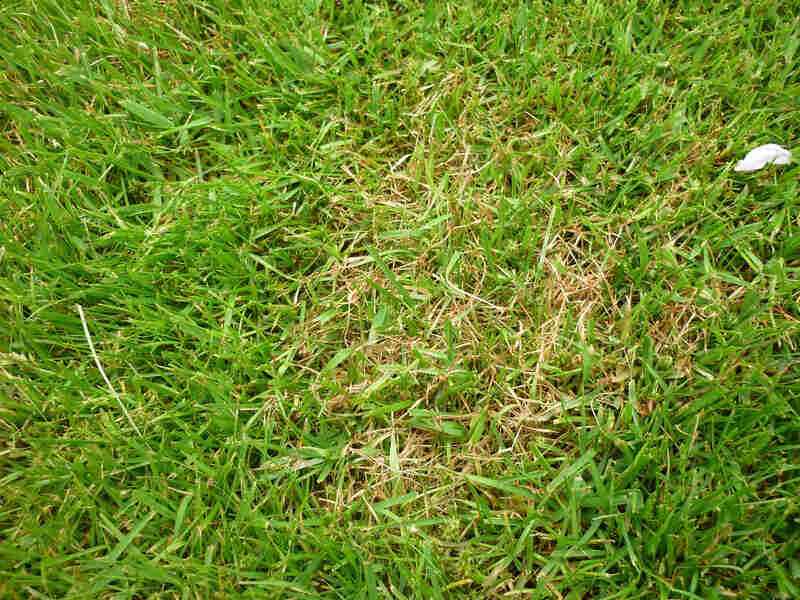
Red thread disease that makes your lawn look like children playing with pink and red silly string. Though it makes a mess of your neat turf, it rarely kills the grass.
How to identify red thread in your lawn: From a distance, it looks like reddish or pinkish patches up to 2 feet wide. At a closer look, you see a mix of healthy and diseased tan to bleached-looking grass.
Other symptoms of the red thread disease: On humid days, a pink gelatinous fungal crust sets on the leaves, binding them together. It’s the fungal mycelium and often ends up on shoes, mowers, and lawn care tools.
Peak season: Spring
See Related:
– Red Thread and Pink Patch: What They Are and How to Get Rid of Them
3. Brown Patch
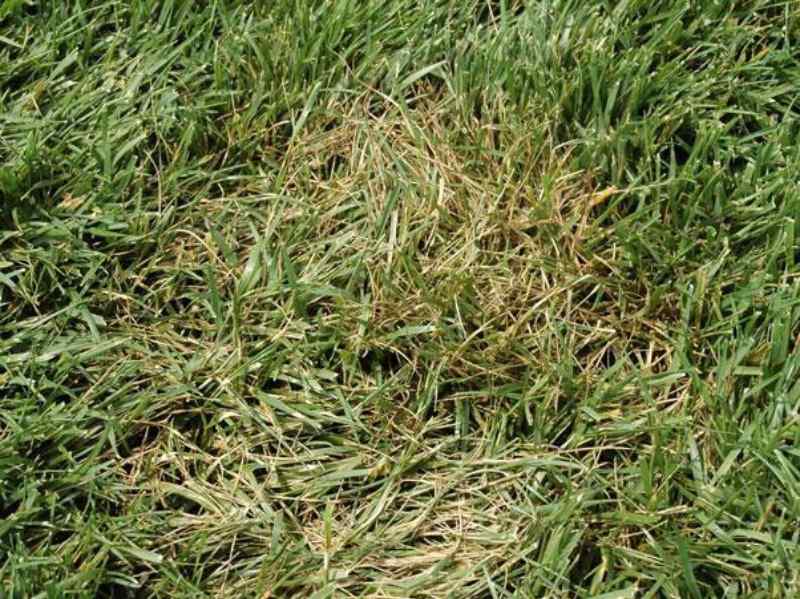
Brown patch disease threatens cool-season grasses in warm and wet weather. It survives in thatch and turf debris and comes back year after year.
How to identify brown patch disease in your lawn: Starts as small irregular brown patches with sunken centers up to a few feet wide. The center often recovers in light infestations, making areas look like rings or arcs. A dark gray ring sometimes circles the patches in lawns mowed too short.
Other symptoms of the brown patch disease: Fine whitish fungal threads in the soil and grass.
Peak season: Summer
See Related:
– Brown Patch: How to Identify, Prevent, and Control It
4. Large Patch (aka Zoysia Patch)
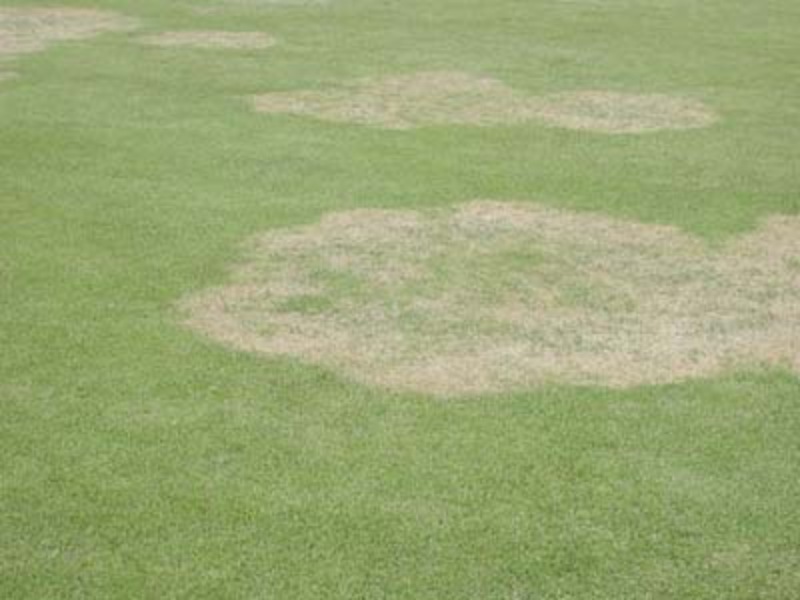
Large patch is Zoysia’s most significant fungal disease. The disease thins the grass, making room for weeds, but it typically doesn’t kill the turf.
How to identify large patch disease in your lawn: Small, irregular areas up to 12 inches wide with tan-orange grass. These might grow into large, well-defined patches of thin, wilted, off-color grass with an orange exterior ring.
Other symptoms of large patch: In early spring, large thatch infections appear as light brown, sunken areas that are slower to return from dormancy.
Peak seasons: Spring and fall
See Related:
– Large Patch Disease: What It Is and How to Get Rid of It
5. Yellow Patch (aka Cold-Season Brown Patch)
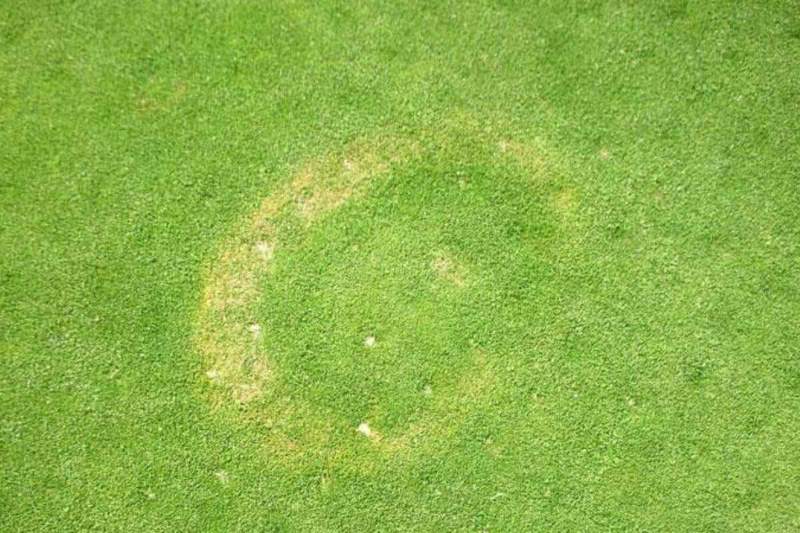
Outbreaks of yellow patch, sometimes referred to as cold-season brown patch, occur in spring and fall, and the damage is usually superficial but can lead to thinned areas in your lawn.
How to identify yellow patch disease in your lawn: Circular yellow to light-brown patches or rings from 5 inches to a few feet wide appear on your lawn.
Other symptoms of yellow patch: Infected turf patches may be tan, orange, or light brown, depending on the grass type.
Peak seasons: Mid-spring and mid-fall
See Related:
– Yellow Patch: How to Identify, Control, and Prevent It.
6. Pythium Blight (Grease Spot)
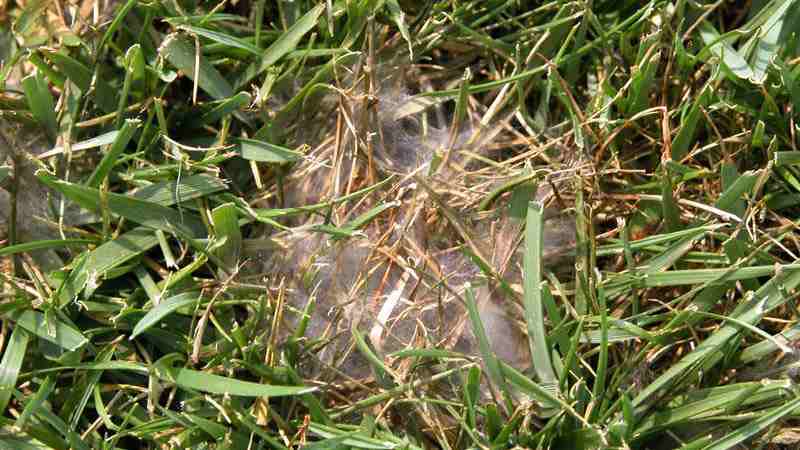
How to identify Pythium blight in your lawn: Small circles of withering, blackened, or reddish-brown grass 2 to 6 inches wide following water patterns in your lawn.
Other symptoms of Pythium blight: Early morning, you’ll see cottony white fungal mycelium masses on the soil and grass.
Pythium blight thrives in hot and wet conditions. This disease damages leaves and crowns, acts fast, and kills turf plants, causing severe damage to residential lawns and athletic fields.
Peak season: Summer
See Related:
– Pythium Blight: How to Identify, Control, and Prevent It
7. Fairy Ring
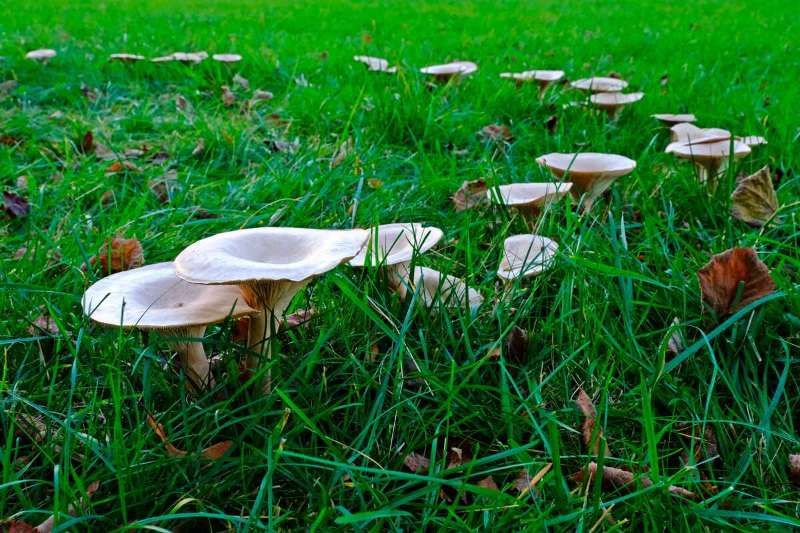
Fairy rings don’t directly attack the grass. Turf wilts and dies when a high fungal density prevents water from moving through the soil. The grass plants essentially dry out.
Fairy ring fungal pathogens decompose organic matter into nitrogen, making grass in affected areas often grow greener and taller than turf in clean zones.
How to identify fairy rings in your lawn: Circles or semicircles up to 20 feet wide consisting of a band of:
- Taller, greener grass
- Dry, straw-colored to light brown turf
- White fungal strands visible in the soil
- Mushrooms
Peak seasons: Spring through fall
See Related:
– What is Fairy Ring and How to Get Rid of It
8. Gray Leaf Spot
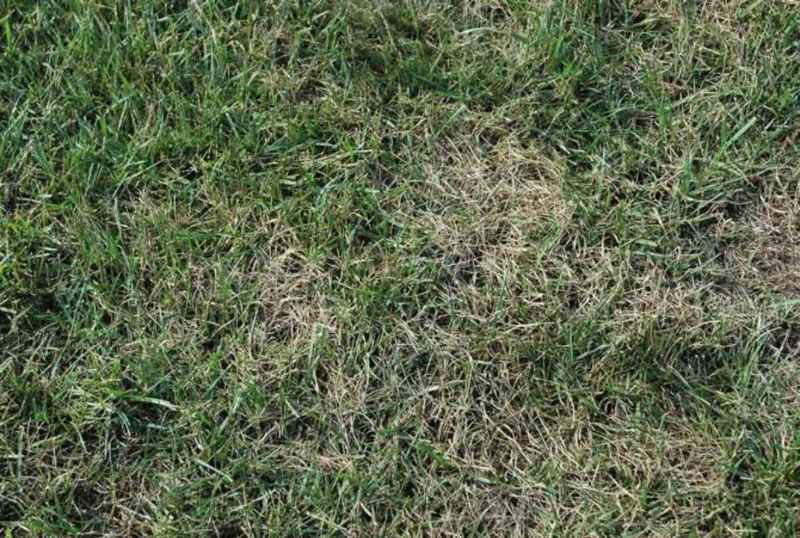
Gray leaf spot disease mainly impacts cool-season grasses, but warm-session species are also affected. Perennial ryegrass is most rapidly and severely affected.
How to identify gray leaf spot in your lawn: Irregular blighted patches in perennial rye and tall fescue. In St. Augustine lawns, there’s mostly a brown cast with less defined areas.
Other symptoms of gray leaf spot: Bleached, twisted leaves are sometimes covered in grayish spores called conidia.
Peak Season: Summer (hot, humid weather)
See Related:
– Gray Leaf Spot: How to Identify and Treat It
9. Fusarium Blight
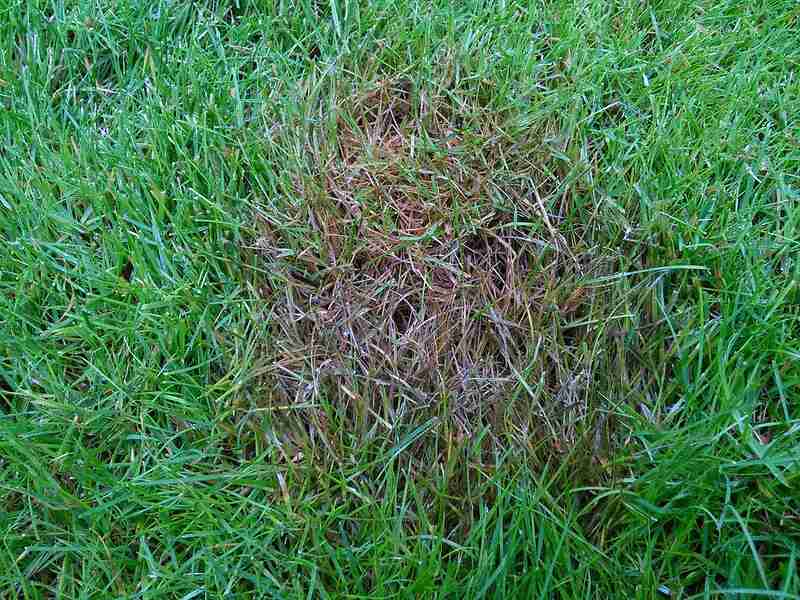
Fusarium blight is a fungal disease that attacks mainly cool-season grasses weakened by drought and high heat.
How to identify Fusarium blight in your lawn: Grayish-green areas with a circular shape, a few inches to a few feet wide. In some cases, the grass regrows in the center, giving it a donut or “frog eye” shape.
Other symptoms of the Fusarium blight disease: A pink layer of fungus sometimes appears on the soil.
Peak season: Summer (hot, dry weather)
See Related:
– Fusarium Blight: What It Is and How to Get Rid of It
10. Powdery Mildew
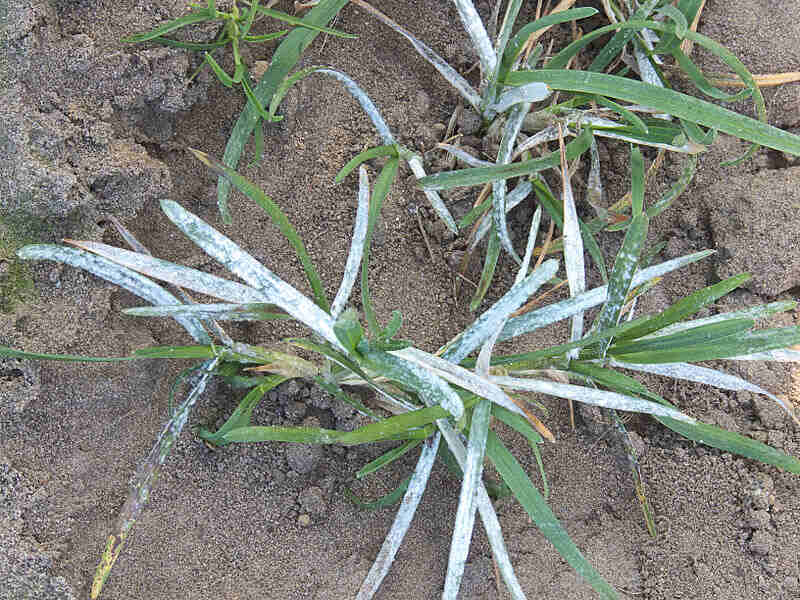
Powdery mildew spreads by spores, which give it a white, powdery appearance. Spores travel by air, and infection starts within 2 hours of contact with healthy grass blades. Fungicides are effective preventive measures but can’t help the grass that is already sick.
How to identify powdery mildew in your lawn: Light green whitish areas that look like they’ve been powdered with chalk. Large areas with light green or pale white, withered grass.
Peak seasons: Spring and fall
See Related:
– How to Treat Powdery Mildew on Your Lawn.
11. Spring Dead Spot
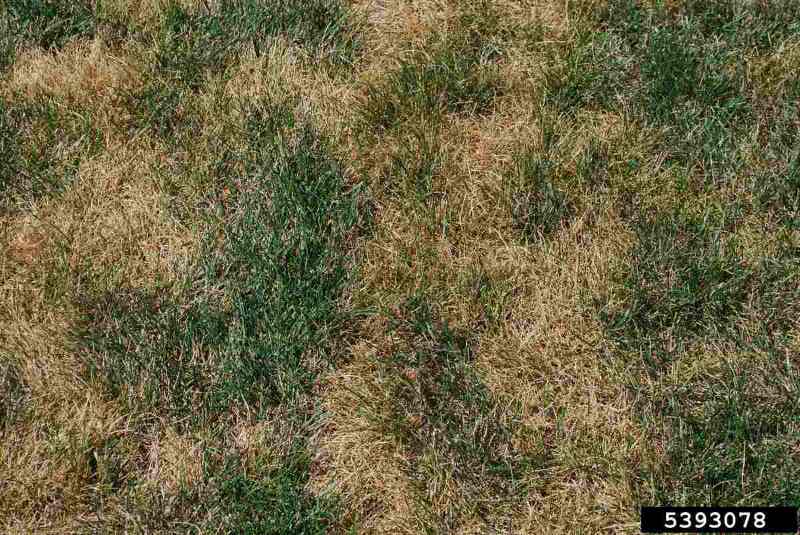
Spring dead spot disease attacks dormant warm-season grasses during fall and winter, damaging roots and rhizomes. The results are visible in the spring with new growth. It’s one of the most severe diseases of Bermudagrass lawns. Affected grass eventually dies.
How to identify spring dead spot in your lawn: Circular spots of bleached-out dead grass, 6 to 12 inches wide, can merge into larger patches. Sometimes the center recovers, creating the appearance of a ring.
Peak season: Fall
See Related:
– Spring Dead Spot: What It Is and How to Get Rid of It
12. Summer Patch (aka Poa Patch)
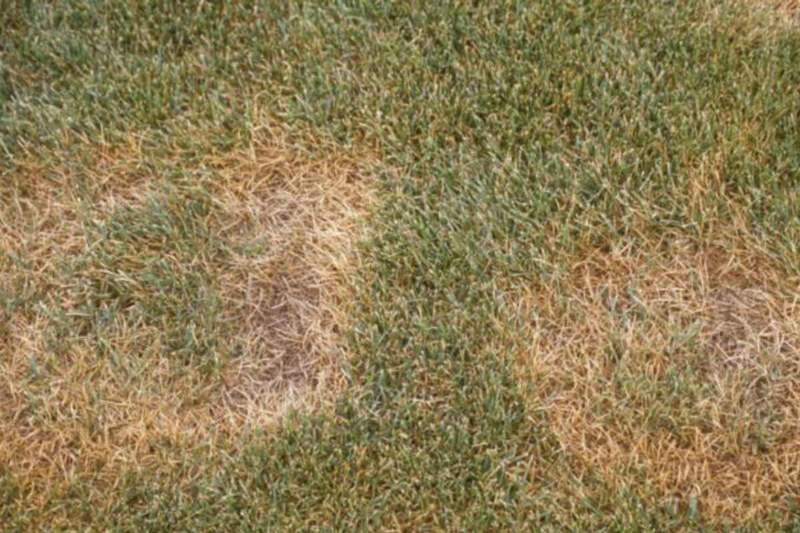
Summer patch disease damages grass roots, making recovery difficult. It is most commonly found with Poa family grasses – annual bluegrass (Poa annua) and Kentucky bluegrass (Poa pratensis).
How to identify summer patch in your lawn: Yellow to tan circular areas of dead grass, up to 1 foot wide. Sometimes, there’s green grass in the center that appears healthy, giving patches the frog-eye or donut look.
Other symptoms of summer patch disease: Dense dark brown to black networks of mycelium strands on infected plants.
Peak seasons: Spring and summer
See Related:
– Summer Patch Disease: How to Get Rid of It
13. Leaf Rust
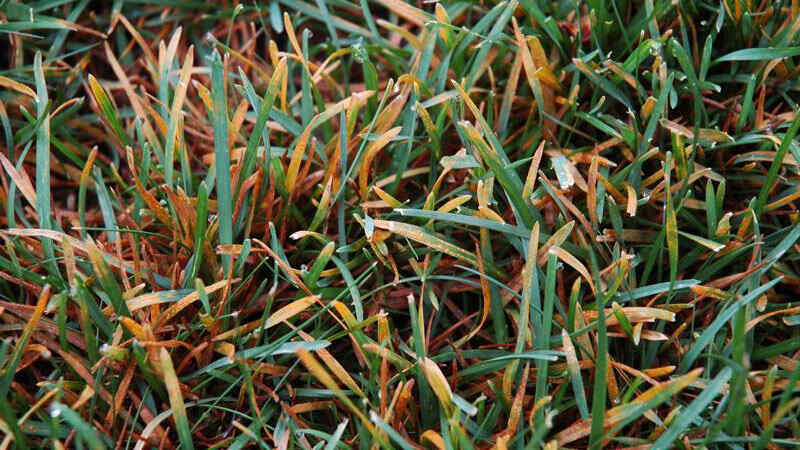
Leaf rust is typically a late summer and early fall disease. It doesn’t kill the grass but weakens it enough to make it vulnerable to weeds and pests.
How to identify leaf rust in your lawn: Golden yellow and then orange-rust irregular patches across the lawn. Orange powder collects on shoes when walking through the grass.
Peak seasons: Summer and fall
See Related:
– Leaf Rust in Grass: How to Identify and Control It
14. Leaf Spot
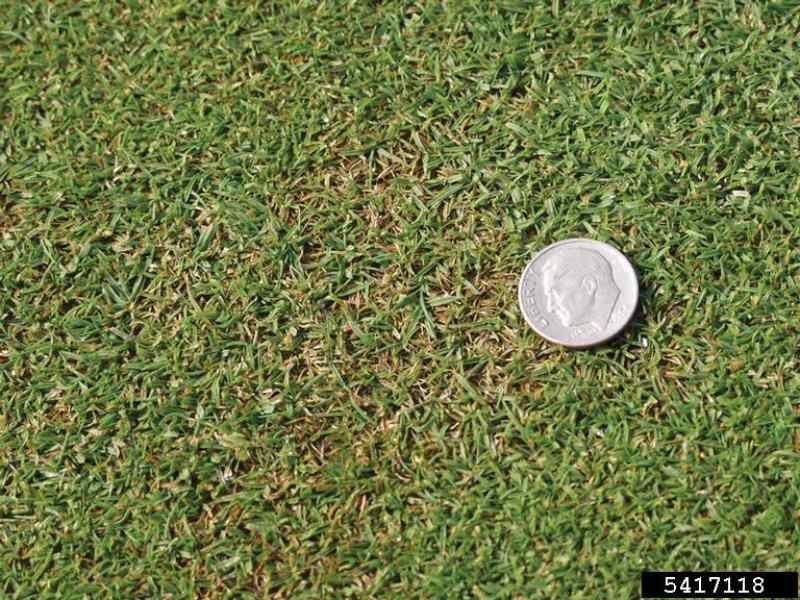
Leaf spot damages mainly winter grasses during their stress and dormancy period. It attacks all parts of the plant and causes severe damage in residential lawns, athletic fields, and golf courses.
How to identify leaf spot in your lawn: Irregular areas with off-color turf. After a windy, hot summer, the turf will show thinned patches with dead grass.
Other symptoms of leaf spot disease: There is no white or gray mycelium on soil or grass. Pathogens are spread by spores.
Peak season: Summer
See Related:
– How to Control Leaf Spot in the Lawn
15. Melting Out
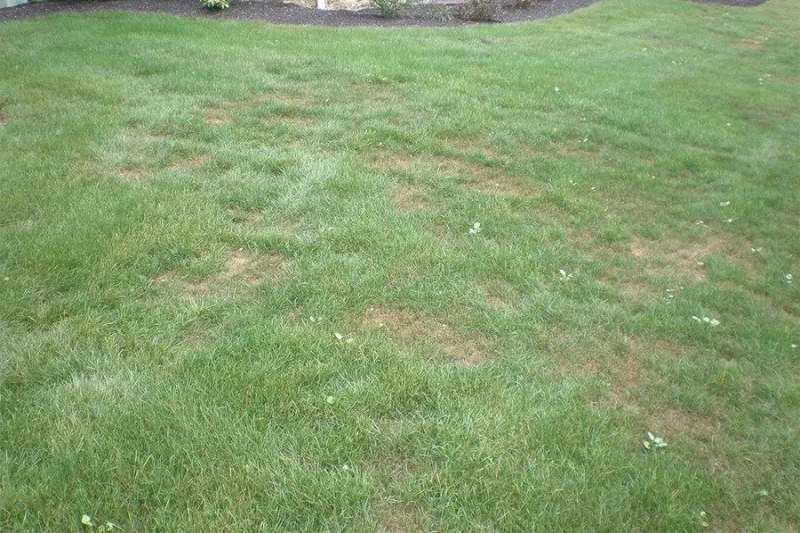
Melting out is a cool-weather windborne disease, easily spread across the lawn. Its symptoms are similar to those of leaf spot.
How to identify melting out in your lawn: Patches of yellow to blackish-brown wilted or dead grass.
Peak seasons: Spring and summer
See Related:
– How to Get Rid of Melting Out in Grass
16. Take-All Root Rot (TARR)
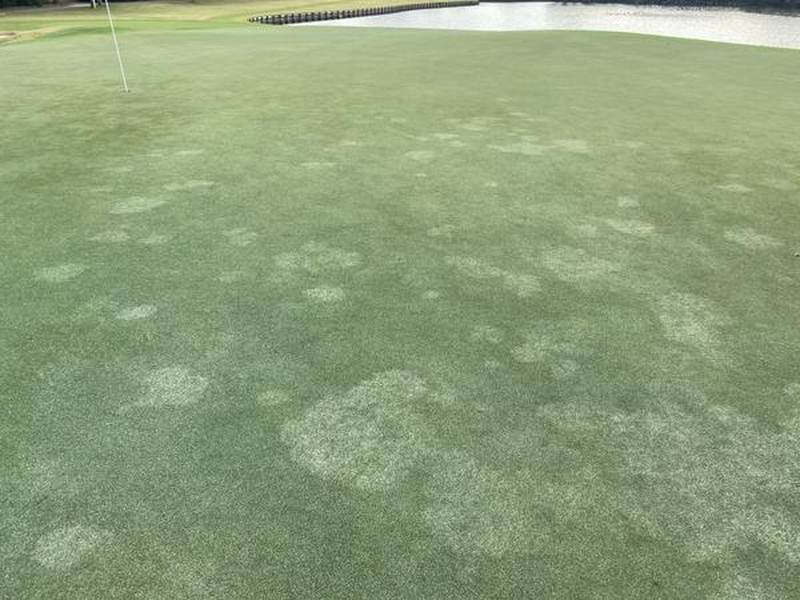
Take-all root rot (TARR) is a severe lawn disease that goes for grass roots. It does not attack the grass leaves. What you see on your lawn at blade level is the result of rotten roots and shows that the pathogen has already been in the soil for 2 to 3 weeks.
How to identify take-all root rot in your lawn: Chlorotic, yellow to light green patches from a few inches to a few feet wide. The grass eventually turns brown, thins out, and affected patches become bare areas.
Peak seasons: Spring and summer
See Related:
– How to Get Rid of Take-All Root Rot (TARR)
17. Leaf Blight
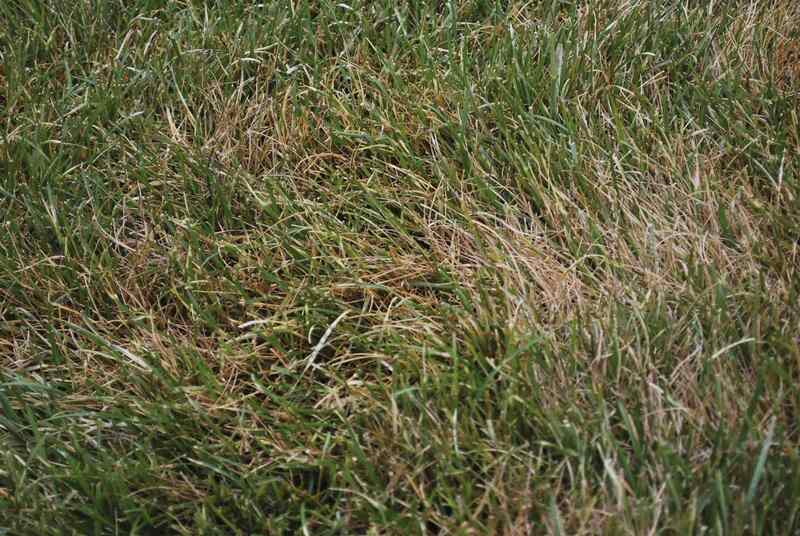
Leaf blight is caused by fungi that spread their spores during wet weather, infecting freshly mowed grass tips. Fortunately, the damage is not permanent, and the grass recovers quickly since the disease doesn’t affect roots and crowns.
How to identify leaf blight in your lawn: Irregular patches with blighted straw-colored or brown grass appear overnight.
Peak seasons: Spring and summer
See Related:
– Leaf Blight: How to Identify and Control It
18. Gray Snow Mold
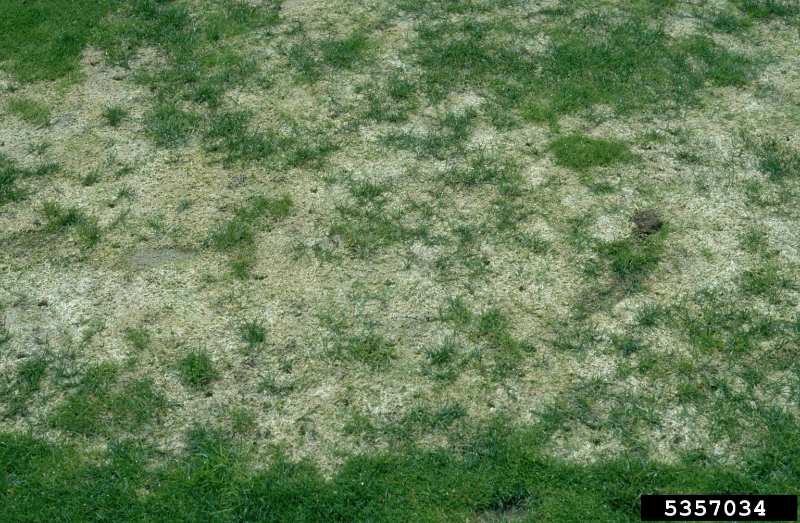
Snow mold is a cold-loving fungus that uses the wet and dark medium created under snow cover to attack grass plants. The fungi remain dormant in leaf litter and thatch from spring to the next winter snow.
How to identify gray snow mold in your lawn: Whitish or straw-like crusted circular or irregular patches of dead grass, with matted leaf blades, ranging from a few inches to 3 feet in size.
Other symptoms of gray snow mold: You might spot gray fungal mycelium near receding snow banks.
Peak season: Winter
See Related:
– How to Get Rid of Snow Mold
19. Pink Snow Mold
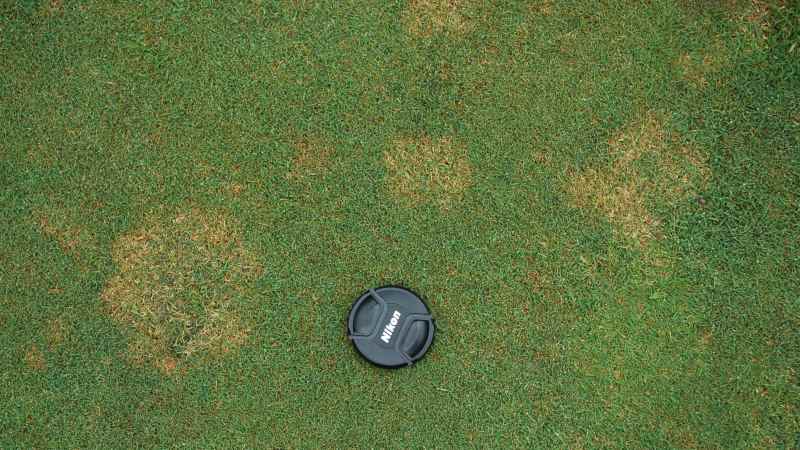
Pink snow mold attacks all parts of the grass plants. It thrives in the moisture and warmth caught under the snow layer during winter. Infestation signs are visible during spring. In some cases, you need to reseed the affected areas.
How to identify pink snow mold in your lawn: Pink, white, or tan circular patches 1 to 2 inches wide extending up to 1 foot appear when the snow melts in the spring.
Other symptoms of pink snow mold: Affected grass is often covered in white to pink fungal growth.
Peak season: Winter
See Related:
– How to Get Rid of Snow Mold
20. Anthracnose and Root Rot
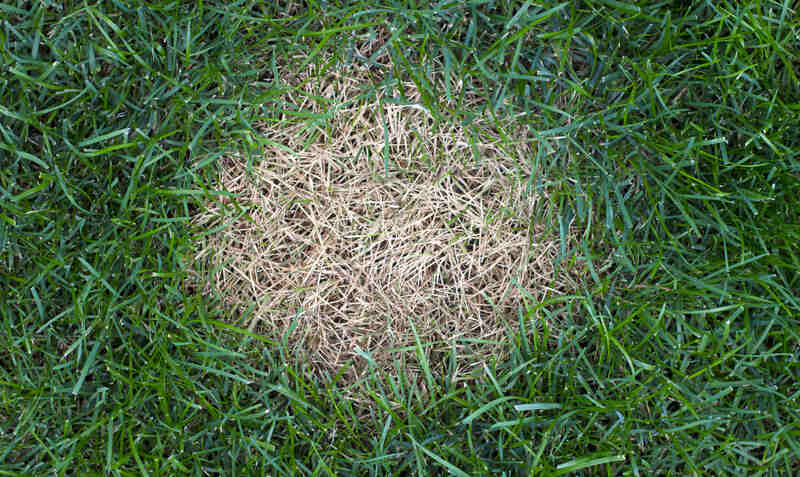
Anthracnose can behave as a foliar blight and as a root, stolons, and crown rot disease. When it attacks the crown and root, it’s more virulent and damaging, often killing the grass.
How to identify anthracnose in your lawn: Bright yellow, reddish, or bronze patches of various sizes, from small freckle-like spots to circular patches up to 1 foot wide. Turf thinning.
Other signs of anthracnose disease: Black hairline spore structures are present on infected leaves and stems, best noticed with a magnifying glass.
Peak seasons: Summer and fall
See Related:
– How to Get Rid of Anthracnose in Your Lawn
FAQ About Lawn Diseases
No, slime mold is not a fungal lawn disease but amoeba-like organisms that feed on bacteria and migrate on grass blades during humid, warm periods. They form white, yellow, orange, blue, or gray patches in turf, looking like fungal spores.
Slime molds don’t damage the grass or its roots. Still, they can shade the turf if covering large areas for a prolonged time, limiting photosynthesis.
To identify turf diseases:
• Observe the soil fertility, drainage abilities, and weather conditions
• Check symptoms on grass blades, stems, crowns, roots, and stolons
• Compare them with the most common fungal diseases for your type of turf.
When to Call a Lawn Care Professional
Call a lawn care professional when:
- You see the first signs of a fungal disease. With the correct treatment, your lawn will recover faster and easier.
- The disease keeps coming back yearly despite your preventive actions and treatments.
- You’re not sure what’s wrong with your lawn.
LawnStarter customers can book lawn disease treatments for Brown Patch, Gray Leaf Spot, Dollar Spot, and Large Patch. Call LawnStarter Customer Support for Lawn Disease Treatment, as we may not offer this where you live.
Main Image: Fairy ring mushroom. Image Credit: Arkorn / Adobe Stock
